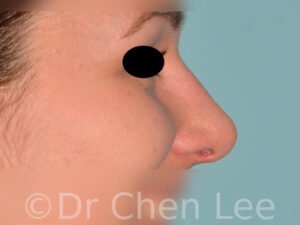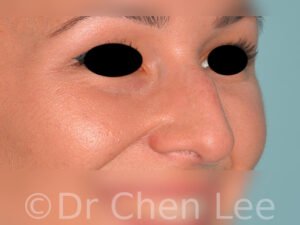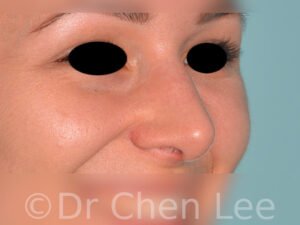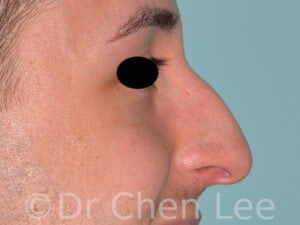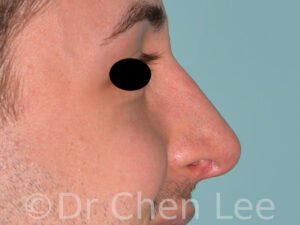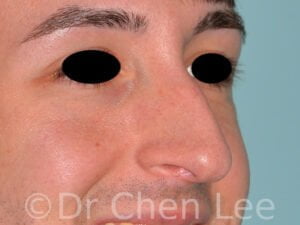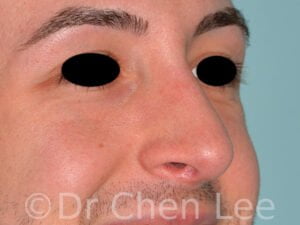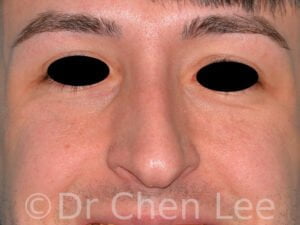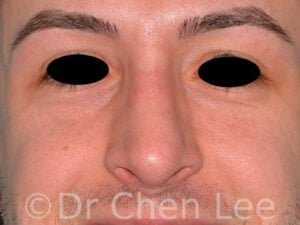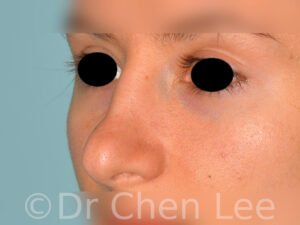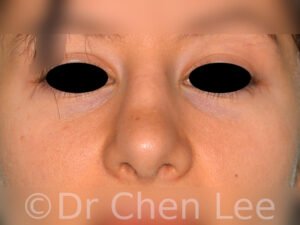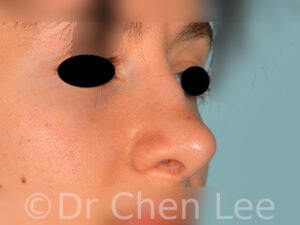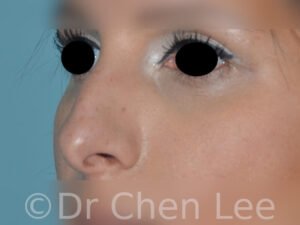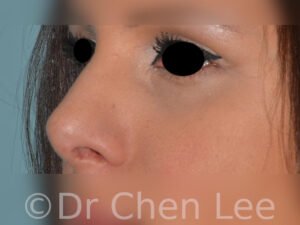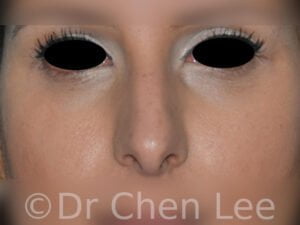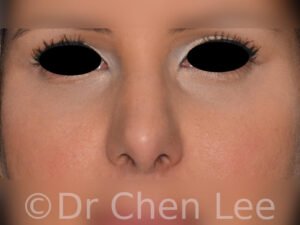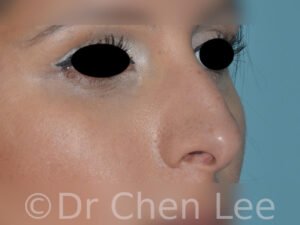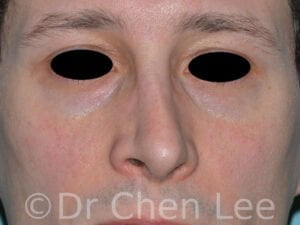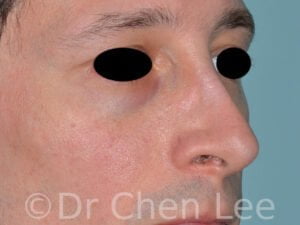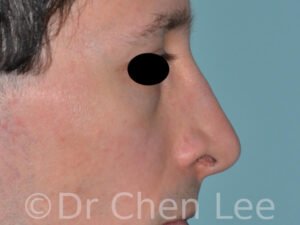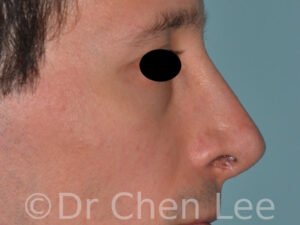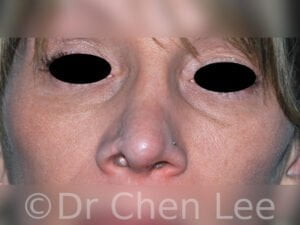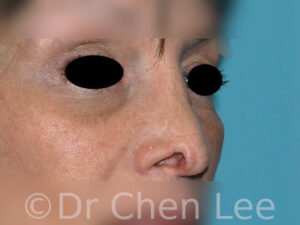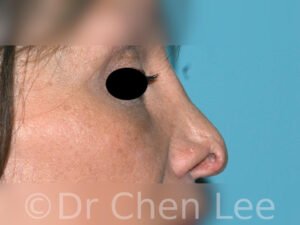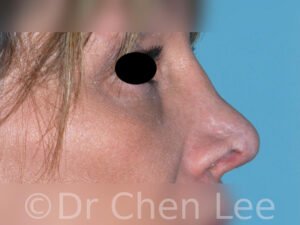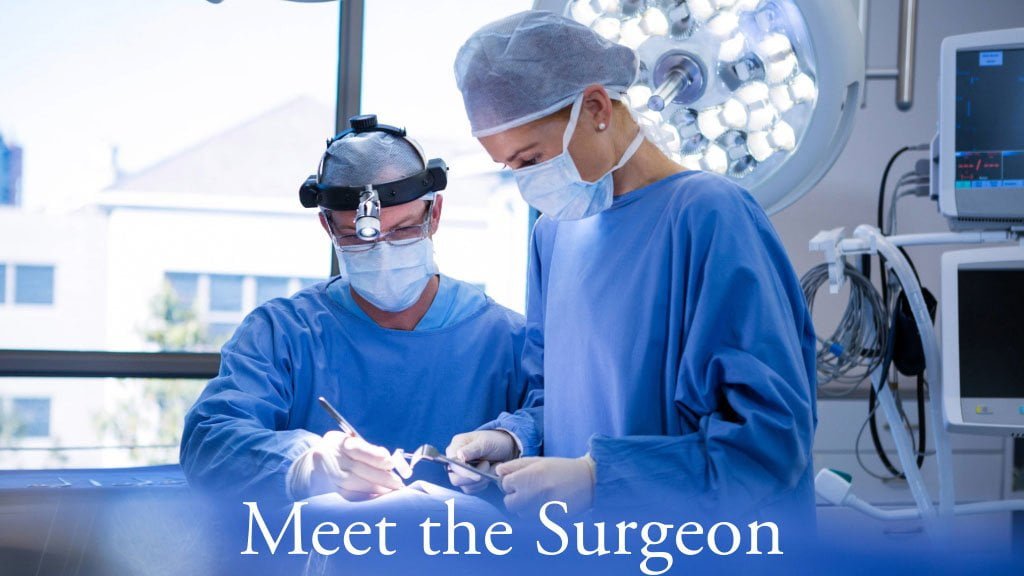Rhinoplasty
Rhinoplasty is one of the plastic surgeries that can greatly improve your overall appearance
The nose is located anatomically in the center of the face and plays a vital role in how we perceive beauty. Most of us notice someone’s nose only when it is not in balance with their face, whether it’s too large, too wide, or misshapen. If you are displeased with your nose, you are likely dissatisfied with your overall facial appearance. Even slight adjustments such as smoothing an unsightly nasal hump can yield dramatic improvement to your well being.
Rhinoplasty – The Essentials
Rhinoplasty is one of the plastic surgery procedures that can greatly improve your overall appearance.
Nose Reshaping Techniques
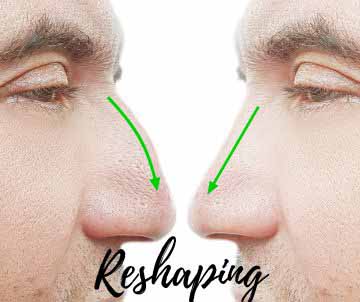
Rhinoplasty (aka nose job,) is a surgical procedure that changes the appearance of the nose or its airways. Most rhinoplasty procedures transform the appearance of the nose through surgery by adding or removing bone, grafting tissue from other parts of the body, or simply implanting a synthetic material. Improving the appearance of the face with well-performed rhinoplasty is highly desirable in modern culture. In North America, nose reshaping with a surgical rhinoplasty is one of the five most common plastic surgery procedures. It is performed in adults when facial growth is complete.
During an open rhinoplasty, incisions are made inside each nostril and connected across the columella (external pillar that separates the two nostrils). Direct visual exposure of the entire cartilaginous nose is possible using an open rhinoplasty technique. The visible columellar incision is 2 to 3 mm in length and in a position that is difficult to see. The resulting scar is rarely a problem.
Open rhinoplasty permits better access, visibility, and precision to enhance and reshape the nose. In addition, open rhinoplasty offers considerable advantages during re-operative or complex nasal surgeries. The wide exposure of the nose facilitates the accurate placement of cartilage grafts to restore structural support and contour to the nose.
During a closed rhinoplasty, incisions are hidden inside each nostril. No cuts are made on the external skin. Exposure and visibility of the nasal cartilages are limited as the skin cannot be retracted for access. Recontouring of the nasal dorsum is possible by passing instruments through the intranasal incisions and under the dorsal nasal skin. However, work on the nasal tip is less desirable than using a closed rhinoplasty technique.
Silicone nasal implants
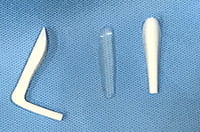
Porous polyethylene
Silicone nasal implants are commercially available in many shapes and sizes. The surface of a silicone implant is smooth and non-porous. As a result, the adjacent tissue does not adhere to the implant. Instead, a soft tissue scar encapsulates the implant. Sometimes after years, the scar capsule contracts and may expel the implant through the soft tissue. The soft flexible physical nature of silicone also increases the risk of nasal implant deformation and displacement.
Porous polyethylene nasal implants are rigid. After surgical implantation, soft tissues adhere to its surface reducing the risk of displacement. Its rigid physical character also resists deformation. However, surgical removal is difficult due to the tenacious adherence of adjacent tissue around the porous polyethylene nasal implant.
Polytetrafluoroethylene
Polytetrafluoroethylene is commercially prepared in thin flexible sheets of precise thickness. Its surface is porous permitting tissue adherence. The low risk of displacement and ease of fixation to tissue permits its selective use for fine recontouring of the nose. Some surgeons use it instead of crushed cartilage grafts.
Polydioxanone Plate – Resorbable implant
A polydioxanone plate is a resorbable implant that provides structural support and simplifies cartilage management during complicated nasal procedures. Risks and complications are low. This biodegradable implant remains intact during the healing process but is completely absorbed within 25 weeks.
A well-performed surgical rhinoplasty offers a definitive and permanent change in the desired shape of the nose. In addition, functional airway obstruction can be addressed during the same nasal procedure. However, the benefits of surgical rhinoplasty must outweigh the risks, costs, and convalescence associated with surgery. Adoption and application of injectable hyaluronic acid fillers in the nose offer the possibility of rhinoplasty without surgery for some.
Non-surgical rhinoplasty with the use of injectable hyaluronic acid fillers is an alternative for people looking for defined, limited, and temporary nasal enhancements. Dr. Chen Lee recommends using well-known brands of hyaluronic acid fillers. The duration of the effect following non-surgical rhinoplasty is unique to each case. Most injections of hyaluronic acid are resorbed in the year following injection. To maintain the desired appearance of the nose, periodic re-injections are required at 6 to 12-month intervals. Furthermore, it is not possible to improve the respiratory function of the nose using injectable fillers.
Although not a substitute for cosmetic rhinoplasty, non-surgical rhinoplasty offers a less invasive procedure, performed in 15 minutes, at lower expense, with a minimal recovery period, less discomfort, and does not require a specialized surgical facility (e.g. hospital or surgery center)
Patients who desire non-surgical rhinoplasty should have realistic expectations and understand the need for periodic re-injections to maintain their desired appearance.
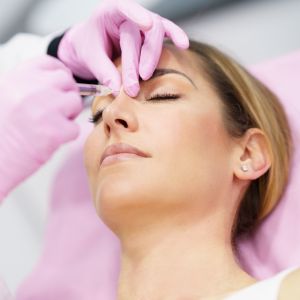
Nose Surgery Considerations
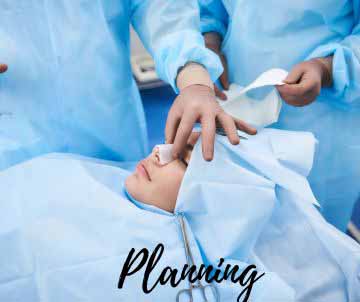
During your consultation, Dr. Chen Lee will perform a detailed nasal examination to determine the best rhinoplasty technique for your unique anatomy. A written detailed list of risks and complications will be provided. We encourage you to read it.
If you wish to pursue surgery, routine laboratory tests are ordered to evaluate your fitness for general anesthesia and surgery.
Below are some basic recommendations to prepare for a rhinoplasty:
- 1 month before surgery stop the use of medicated nasal sprays
- 1 month prior to surgery stop use of any tobacco or substances containing nicotine and do not resume until healed (usually 1 month after surgery)
- 1 month prior to surgery stop the use of all street drugs
- 2 weeks before surgery avoid the use of nonsteroidal anti-inflammatory medications (eg. Aspirin, Advil, Motrin, etc.)
- In the evening and morning before surgery, shower with an acne soap such as Spectro-Jel
- It is important to fast (not eat or drink anything) after midnight before surgery
Dr. Chen Lee’s rhinoplasty patients are usually managed as ambulatory day surgery patients at the Metropolitan Surgery Center in Montreal. Our patients should expect the following:
- Plan to be at the center for half a day.
- Arrive at the surgery center on time.
- The nursing team will greet you and prepare you for safe surgery.
Rhinoplasty is usually performed under general anesthesia.
- To have a safe anesthetic, you must arrive at the surgery center in a fasted state (i.e. nothing by mouth 8 hours before surgery).
An open rhinoplasty typically requires 2:00 to 2:30 of operative time.
- When you wake up, you will be taken to a recovery room.
- Once the anesthetic has worn off, you will be transferred to an observation unit for 1-2 hours before being discharged home.
Your safety is our utmost concern.
- You must be accompanied home by a trusted friend or family member.
- We recommend that they be present in your home for the early days following rhinoplasty.
Our office will call by telephone to periodically check on your progress at home. If you have nasal packing, your first office visit will be 1-3 days after surgery. Another visit is necessary 6 to 10 days after the rhinoplasty to remove the nasal splint and columellar sutures.
- To reduce swelling, try to maintain a sitting or semi-sitting position.
- Sleep with pillows behind the back and below the knees for the same reason.
- Take short walks inside your home. Move your legs and ankles to prevent phlebitis.
- Take medications as prescribed.
Contact us immediately if:
- Bleeding
- Intense pain
- Fever
- Swollen and painful leg
Complications following nose reshaping procedures are infrequent.
Bleeding, infection, hematoma, and seroma are possible. If severe, go straight to the hospital emergency room hospital without delay.
Scars of the columella usually fade with time (>6 months). Occasionally, scar revision is necessary.
During your consultation, Dr. Chen Lee will answer your questions or concerns about complications. Our office will also provide you with a more comprehensive document listing the risks and complications associated with rhinoplasty.
Rhinoplasty Cost

The initial office consultation for rhinoplasty is a wonderful opportunity to establish a healthy patient-surgeon relationship. During the consultation, a nose job specialist will typically perform an aesthetic and functional evaluation of the nose. Our rhinoplasty doctor, Dr. Chen Lee, tailors his recommended treatment to every patient’s unique situation. In addition, the risks associated with the recommended treatment are explained in detail.
The patient should use this initial encounter to judge the professionalism and qualification of the rhinoplasty doctor, as well as the quality of the information transmitted. With a comprehensive understanding of your goals, the plastic surgeon will be better able to achieve your objectives and make your nose job safe and satisfying.
The price of nose reshaping procedures in Montreal is quoted as a “global fee”. The price quote includes the costs of the surgeon, anesthesiologist, nurses, office visits during the first postoperative year, operating room, and surgical facility fees. Revisions and touch-up nose reshaping surgeries are not included in the initial rhinoplasty quotation. If general anesthesia is necessary, you will have to pay for the substantial costs associated with a surgical revision. Minor touch-up surgery under local anesthesia can often be performed at minimal expense.
Nose job pricing is proportional to its complexity. The price range for an uncomplicated open rhinoplasty is $10,000 – 11,000 + taxes. The price range for re-do (secondary) rhinoplasty is $11,000 – 12,000 + taxes. The price for nonsurgical rhinoplasty with hyaluronic acid injection is $700 – $800 + taxes per 1ml syringe. More accurate rhinoplasty pricing is possible only after a consultation with our plastic surgeon.
Our office requests payment in 2 equal installments. To reserve a date at the surgery center, we request an accompanying first installment (50% payment). The remaining balance is due 3 weeks before your scheduled date of surgery.
Surgeries are payable in cash, certified checks (bank drafts) or Interac. We also work with an independent credit company that offers financial payment plans for cosmetic surgery procedures. However, you should be aware that the interest rates and administration fees of this specialized company are higher than traditional financial institutions. It is often better to negotiate a loan through your personal bank or financial institution. We encourage you to do your homework and compare the true financial cost of these various financial options.
Healing is rarely painful. Most patients complain about the disruption in normal breathing patterns caused by nasal packing. This resolves on the removal of the packing 1-3 days after surgery.
Swelling and bruising around the eyes are common. Many patients also complain of mild-intensity headaches. These symptoms spontaneously resolve in 2-3 weeks. Rest is essential after your nose surgery.
Nasal swelling is highly variable. Swelling diminishes by the 4th week enough to be in public places without drawing attention. Your nose will remain fragile for many months following surgery. To prevent damage, we recommend avoiding contact sports for 3 months.
The final result of a rhinoplasty often requires 12-18 months to be fully apparent.
FAQ – RHINOPLASTY
Rhinoplasty or nose job can be combined with other cosmetic surgeries. You can resume your normal activities (with certain restrictions) after 2 weeks. Our nose reshaping procedures in Montreal are generally performed as outpatients under general anesthesia.
It is normal to have many questions. Below are some of the most frequent questions asked about rhinoplasty that may help you decide whether a nose job is right for you.
Patients who desire non-surgical nose jobs should have realistic expectations and understand that results are limited and temporary. Periodic re-injections at 6 to 12-month intervals are necessary to maintain the desired appearance.
Furthermore, it is not possible to improve the respiratory function of the nose using injectable fillers.
It is appropriate for adults, as well as teens, as long as they are about 16 years old and their facial growth is complete. Candidates must also be in good health and have reasonable expectations of what can be achieved by surgery. Our patients often choose rhinoplasty for the following reasons:
- Enhancing the size or shape of the nose
- Repairing damage caused by injury
- Improving breathing
- Combination with another facial procedure, such as eyelid surgery or facelift
Rhinoplasty procedures involve techniques that restore structural support to weakened areas of the nose. Most often this is achieved using special suture techniques or synthetic resorbable implants (polydioxanone plate). When greater structural support is necessary, cartilage grafts harvested from another site of the body are the best option. The potential sites where cartilage grafts can be harvested for rhinoplasty include:
- The nasal septum – is the first choice of most rhinoplasty surgeons to harvest cartilage grafts. It has the advantage of a hidden donor site, is in the same field of surgery, and yields high-quality cartilage for nasal grafting.
- Ear cartilage – the curved cartilage of the ear is especially useful to recontour the gentle curves of the nasal tip. The scars are well concealed in the natural folds of the ear.
- Rib cartilage – Finally, if a larger amount of cartilage is needed, the surgeon can sometimes remove cartilage from a rib. A 3 cm incision hidden under the breast crease can yield large quantities of cartilage to rebuild a complex nasal deformity.
After an open rhinoplasty, there are columellar skin sutures that require removal 6 to 10 days after surgery. Sutures inside the nostrils are resorbable and will dissolve.
Nasal packing is often used to control the position of tissues during rhinoplasty. It is usually removed during a quick office visit 1-3 days after surgery.
No, rhinoplasty is generally not painful. Most patients are annoyed by the temporary disruption in their normal breathing patterns. This soon resolves after the removal of the occluding nasal packs placed at surgery. You may also experience some discomfort from the soft tissue swelling and dryness inside the nose. This will usually resolve spontaneously 2-4 weeks after surgery. Headaches can usually be relieved with acetaminophen.
Low-impact activities such as brisk walks, stationary cycling, and training on an elliptical exercise machine can be resumed 3 weeks after rhinoplasty. High-impact activities such as running and high-intensity fitness classes can resume 6 weeks after surgery. Contact sports that involve the risk of nasal trauma (i.e. martial arts) should be suspended for a minimum of 3 months.
The risk of infection is significantly lower 1 year after rhinoplasty. We recommend you wait more than 12 months after rhinoplasty before piercing your nose.
Rhinoplasty Price
- $10,000 base price + taxes.
- Includes the costs of the surgeon, anesthesiologist, and nurses.
- Includes surgical facility fees.
- Revisions and touch-up surgeries are not included.
Preparation for Rhinoplasty
- Avoid nonsteroidal anti-inflammatory medications (acetylsalicylic acid, ibuprofen, etc.)
- Stop smoking, do not use e-cigarettes, avoid nicotine and marijuana
- Do not drink alcohol
- Continue prescription medications (unless advised otherwise)
Day of Surgery
- Stay fasted from midnight prior to surgery (no food, no drinks)
- Be punctual – Arrive on time at the surgery facility
- Wear loose clothing – Avoid the use of cosmetics
- Come accompanied by a responsible person (transportation home)
Advice After Rhinoplasty
- Do not cook, clean, carry weight (groceries or children), or drive
- Take your medications as prescribed
- Notify us promptly of unexpected symptomatology
- Do your best to rest and relax for 2 weeks


